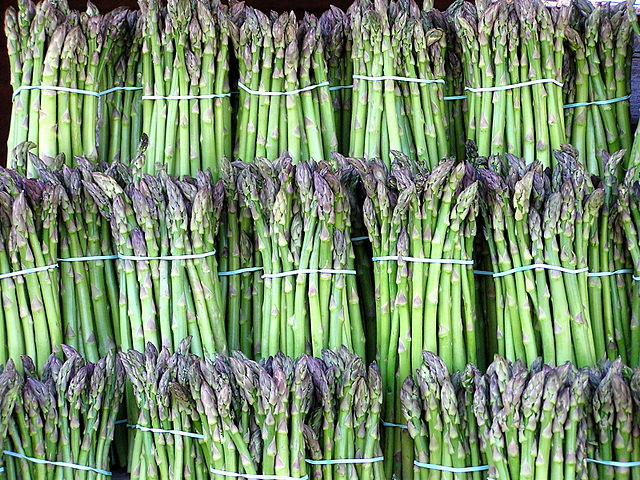The War on Asparagus

For decades, the United States has waged what is often termed the “War on Drugs,” an international effort on behalf of law enforcement to limit the sale of illegal narcotics and other illicit drugs throughout the fifty states. The gains from these efforts are questionable but the costs are not. About a year ago, a Queens College sociologist told the New York Times “that processing each of the roughly 85,000 arrests for drug misdemeanors in New York City last year cost the city $1,500 to $2,000” — if accurate, that’s well north of a hundred million dollars. Virgin Group founder Richard Branson took to CNN to make a similar case last winter, calling the Drug War a “trillion dollar failure.” And a 2008 study by a Harvard University economist suggests that by keeping many such drugs illegal, governments were running up bills in the $40 billion range annually, while leaving a similar amount of would-be tax revenue unrecouped.
Those are big numbers. Here’s another one: 62%. That’s how much the value of American asparagus farms, collectively, lost from 1999 to 2009. And a big reason for that is the War on Drugs.
According to the U.S. Department of Agriculture (see the spreadsheet titled “Table03” on this page), American asparagus farms were worth just over $233 million in 1999. That, to date, is their highest total value. A decade later, those farms (or, those which still existed, as the farm sizes fell by two-thirds over that same decade) were worth just under $90 million. The drop off is stark, but it’s not because of a lack of demand from American consumers. In fact, if you check out Table11 on that same link, you’ll see that the annual per capita consumption of asparagus in the United States over that same period is way up, from 1.12 pounds per person to 1.52. Americans want more asparagus. We’re just getting it from elsewhere, and specifically, Peru.
China is by far the world’s largest asparagus producer (at 7 million metric tons a year), but Peru is number two at about 400,000 metric tons. Peru’s asparagus industry, though, is also relatively new. In the 1990s, the United States started paying Peruvian farmers to grow asparagus, hoping they’d forgo growing coca (the plant used to make cocaine) and instead grow the totally legal vegetable. In 2004, the New York Times estimated that the cost of this program ran the United States around $60 million per year. The effect: a lot of cheaper-than-typical asparagus, which has dramatically harmed the ability for U.S growers to compete.
But the effect on Peru’s coca production? It probably isn’t all that significant. The 2004 Times article cites a letter from the government of Peru to the U.S. Department of State, noting that 40% of the nation’s asparagus production came from coca-producing areas. But a 2001 audit, in a report to Congress and as recounted in that same Times article, the auditing group “[did] not believe that Peruvian asparagus production provides an alternative economic opportunity for coca producers and workers — the stated purpose of the act.”
Bonus fact: After most people eat asparagus, their urine becomes potentially odorous due to the presence of a compound which passes through the body. But not everyone can detect the odor. According to one study, only about 10% could detect the asparagus even if the urine was “highly diluted,” suggesting that a chromosome unique to that group was responsible for this ability. Wikipedia states that “only about 22% of the population have the autosomal genes required” to detect the smell.
From the Archives: Sprouted: What do Brussel sprouts have in common with asparagus? Your genes matter.
Related: A book on the making of the Peruvian cocaine market.
